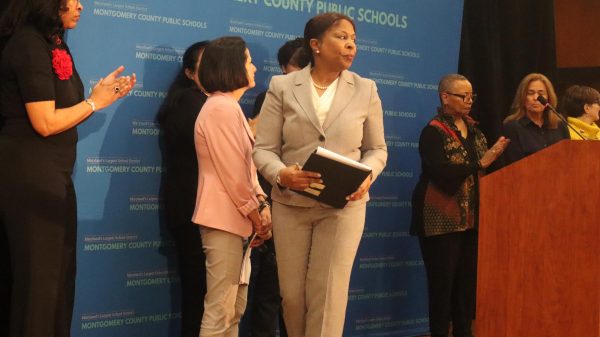Lead found in Maryland schools’ water
Lead found in Maryland school’s water has been an ongoing concern for years, and data collected by the Maryland Department of the Environment (MDE) and other sources provides evidence that the issue is still relevant. According to Maryland Law (Chapter 386, 2017), all occupied schools, regardless of public, private or charter, are required to test once every three years for the presence of lead in all drinking water outlets.
Results from these tests administered by the MDE in coordination with the Maryland State Department of Education (MSDE) in the 2022-23 school year yielded that 16.21 percent of samples exceeded 5 parts per billion, or ppb, of lead concentration. The U.S. Food and Drug Administration (FDA) states that 5 ppb is the maximum amount of lead contamination allowed in bottled water as levels greater than the designated amount can cause harm, especially to childrens’ developing brains and bodies.
Despite the state law, data from 2018, the year of implementation, till now show that schools are finding consistent levels of lead in their water, which raises the question of what districts are doing to address the problem.
In a feature by WBAL-TV, chief operating officer at Baltimore City Public Schools (BCPS) Lynette Washington stated that 39 schools in the district have safe drinking water for students because those are the newest buildings that can afford to have modern pipes and other fixtures. Washington told the news source that the lead tests are primarily being conducted in those aforementioned schools, and that families should not be concerned because if any school water systems are detected to contain lead, they can simply be turned off.
“I think they should have to test all schools, not just the newer ones [in order] to see which schools [need reconstruction so they can] rank the replacement needs. A school that’s built in like 1920 [would need] newer pipes, rather than one building from 2015,” junior Grace Diaz said.
BCPS focuses their efforts on addressing the symptoms of the problem, rather than the root cause. So far, they have prevented the adverse effects of contaminated water by shutting off supply, offering bottled water, using filtration systems in kitchens and advising students to not consume the water. When asked about this practice, RM students had concerns.
“It’s important [that students] have access to water because sometimes they may run out of water bottles, and also [students need water for] washing their hands too,” Diaz said. Furthermore, school districts are unwilling to spend federal funding on infrastructure unless its required (i.e. A.C. and boiler repairs) due to prioritization of academic spending.
“We most definitely need to be spending more money on water because it is a basic human right that we should all have complete access to,” freshman Malena Martin said.

Sophomore Cindy Jin is in their second year on The Tide and they're excited to be back as a Features Editor! They previously wrote for the News...












